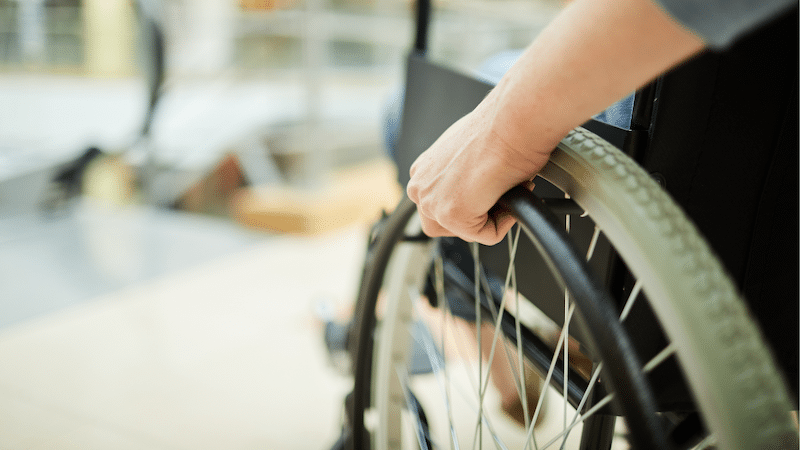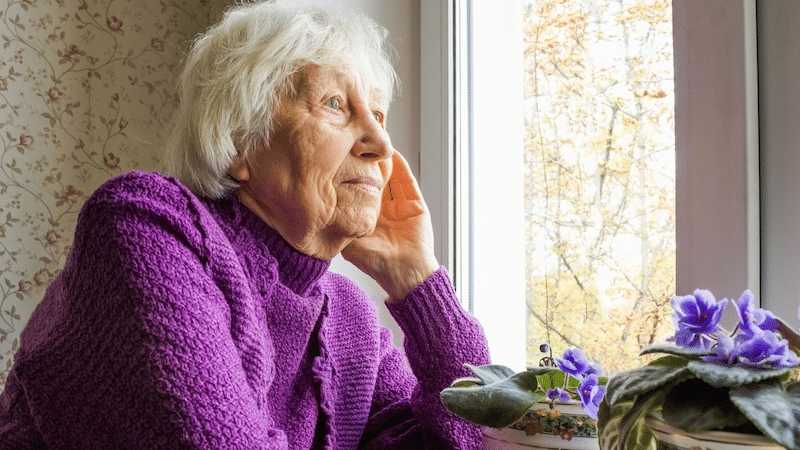Accessibility for Survivors with Disabilities

Approximately 15% of the global population has a disability.1 Victim-survivors of sexual violence living with disabilities, invisible and/or visible, often face unique barriers through societal biases, systemic barriers, and a lack of accessible resources.
The Marginalization of Disabled Survivors
Victim-survivors living with disabilities face disproportionately high rates of sexual violence.2 People with disabilities (PWD) are three times more likely to experience violent victimization, including sexual assault, than their non-disabled counterparts.3 Despite these concerning statistics, societal misconceptions about disability often overlook this issue.
One pervasive stereotype is the notion that PWD are asexual or lack agency in their own sexuality.3,4 This dehumanizing perspective not only erases the reality of their sexual identities but also makes it more difficult for survivors to come forward and be believed. Further, PWD may receive sexual education and/or education in sexual violence with the assumption they will not be engaging in those activities or PWD may not receive sexual education at all. Sexual education for PWD also may not be tailored to their unique experiences and abilities. Regardless of access to sexual education, the perceived vulnerability of PWD can make them targets for perpetrators who exploit their bodily autonomy and agency.
Power Dynamics between PWD and Caregivers
Some PWD may rely on a caregiver to meet their daily needs. This can create a dangerous power dynamic that adds an additional barrier to reporting. Some PWD may depend on caregivers for essential daily tasks such as mobility assistance, personal care, meal preparation, and medication management. This dependency can create a precarious power dynamic where the caregiver holds significant control over the victim-survivor’s well-being and independence. In situations where the caregiver is also the perpetrator of abuse, the victim-survivor may fear losing access to critical support if they report the abuse. This reliance can also lead to feelings of helplessness or entrapment, as the victim-survivor may lack alternative caregiving options or resources to live independently. Additionally, perpetrators in these roles may manipulate this dependency, using threats such as withdrawal of care, isolation from support networks, or institutionalization to prevent the victim-survivor from seeking help. For victim-survivors with limited financial resources or access to external services, further silencing them and leaving them vulnerable to continued abuse.
This dynamic underscores the need for accessible, survivor-centered support systems that prioritize the unique needs of PWD, including emergency caregiving resources, legal protections, and advocacy services designed to break down these barriers to safety and justice.
Barriers to Accessing Support
For victim-survivors with disabilities, the challenges of seeking help are multifaceted. Physical, communication and systemic barriers often hinder access to resources such as crisis hotlines, counseling services, and legal aid.4 These services are especially pronounced for victim-survivors with invisible disabilities, whose needs are less apparent.
Stigma
Mental health conditions and chronic illnesses are often stigmatized, making it harder for survivors to disclose abuse or seek help. Victim-survivors may fear being labeled as unstable, unwilling, or lazy, which can prevent them from disclosing abuse. Others may face skepticism or disbelief due to biases about their credibility, especially if they have cognitive or mental health disabilities. They may also internalize societal misconceptions about their conditions, feeling unworthy of help or doubting their own experiences of abuse
Overwhelming Bureaucratic Systems
Navigating bureaucratic systems can be particularly difficult to understand independently for those with cognitive disabilities. Forms, applications, and procedures are frequently not designed with accessibility in mind, leaving victim-survivors confused, frustrated, or unable to complete any necessary steps to receive aid.
Systemic Barriers
There is a lack of training on how to support victim-survivors with disabilities, leading to inadequate or harmful responses. For example, a single provider may understand one form of disability, but not another. Providers may unintentionally dismiss needs, fail to provide reasonable accommodations, or lack understanding of how disabilities intersect with abuse. For some, a lack of accessible reporting mechanisms—such as sign language interpreters, assistive technologies, or alternative communication methods. Many resources also fail to account for the intersectional nature of identity.4,5 Survivors with multiple marginalized identities—such as disabled people of color or LGBTQIA+ individuals—often encounter compounding barriers and discrimination. Additionally, fear of retaliation, loss of autonomy, or institutionalization often discourages victim-survivors from coming forward. These barriers can make it difficult for a victim-survivor to communicate their experiences effectively, creating a system where many acts of violence go unreported, leaving survivors without the support and justice they deserve.
Challenges for Victim-Survivors with Visible Disabilities
Physical Accessibility
Shelters or counseling centers may lack ramps, elevators, and accessible bathrooms. Even when physical accommodations exist, they may be inadequate, outdated, or difficult to use, creating unnecessary obstacles for victim-survivors seeking support. Additionally, transportation to these facilities may not be accessible, further limiting options for those with mobility impairments.
Discriminatory Attitudes
Survivors may face explicit or implicit biases, with some providers failing to take their accounts seriously or assuming their disability invalidates their experience. Others may view them as burdensome clients, leading to substandard care or denial of services. These attitudes compound the trauma victim-survivors already face, reinforcing feelings of isolation and helplessness.
Challenges for Survivors with Invisible Disabilities
Believability
Survivors with invisible disabilities, such as PTSD, ADHD, or fibromyalgia, may face skepticism about their accounts, particularly when their symptoms or needs are misunderstood. This disbelief can deter victim-survivors from seeking help or lead to retraumatizing experiences when their claims are dismissed.
Stigma
Mental health conditions and chronic illnesses are often stigmatized, making it harder for survivors to disclose abuse or seek help. Victim-survivors may fear being labeled as unstable, unwilling, or lazy, which can prevent them from disclosing abuse. They may also internalize societal misconceptions about their conditions, feeling unworthy of help or doubting their own experiences of abuse.
Toward More Inclusive Support Systems
Addressing these gaps requires a commitment to creating accessible and inclusive support systems. We must actively involve disabled individuals and organizations in the development and evaluation of resources for victim-survivors. By consulting with the community, we can gain insights into the specific needs and preferences of disabled victims-survivors.
Sexual violence against PWD is a deeply entrenched issue that requires urgent attention and action. By dismantling societal biases, addressing systemic barriers, and centering the voices of disabled communities, we can create a world where all survivors have equitable access to justice and healing.



